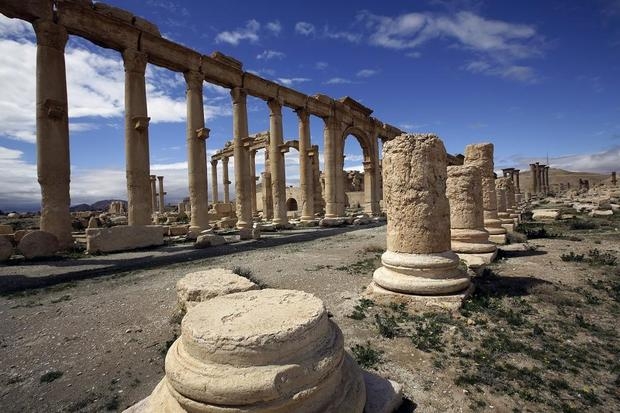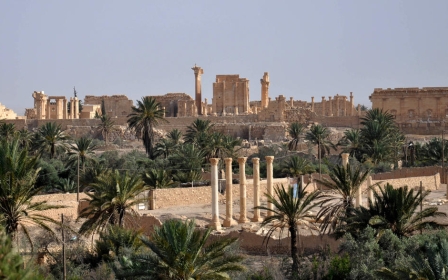UN unable to stop IS relic-smuggling from Iraq and Syria
Vast number of artefacts smuggled out of Iraq and Syria is 'something we will never halt'

Last month, IS fighters defeated Syrian government forces and overran the historic city of Palmyra
Published date: Jeudi 4 juin 2015 - 20:22
|
Last update: 9 années 5 mois ago
UNITED NATIONS - The United Nations is struggling to stop the trafficking of relics looted from ancient Iraqi and Syrian cities that have been over-run by militants from the self-styled Islamic State (IS) group, a UN official told Middle East Eye.
Edouard Planche, a heritage expert for the UN’s cultural agency, UNESCO, said the vast number of artefacts being smuggled out of Iraq and Syria was beyond the capacity of the UN, border guards and global police forces to prevent.
“The looting and destruction of heritage is part of the history of humanity; it is something we will never halt,” Planche told MEE on the sidelines of a UN meeting about stopping IS from making cash by plundering ancient Middle East cities.
“We lack adequate technical and financial means. This is an emergency situation which is new for UNESCO, which is not a humanitarian agency and is not designed to respond to emergency crisis situations, so we are redefining our goals and strategy.”
IS militants have taken sledgehammers to thousands of Iraqi and Syrian archaeological sites under their control. Many relics are destroyed, but others are smuggled out of the region and sold to collectors in the West, the oil-rich Gulf and other lucrative markets.
Security forces in Lebanon, Jordan and Turkey carry out checks on their borders and have confiscated many items that were destined for the global market in contraband artefacts – but many more pass through undetected, said Planche.
“It’s difficult to give a precise amount, but we have pictures taken from the sky. When you see the number of holes and damage at archaeological sites, such as Palmyra and Dura-Europos, thousands of objects have been illegally excavated and stolen,” he told MEE.
“Small pieces, coins, small artefacts. Some are only worth $50, but if you multiply this by the thousands and thousands of items that we estimate have been taken, then this adds up to a lot of money.”
The UN also struggles to calculate how much IS pockets from trading antiquities via smugglers, drug gangs and people-trafficking rings before being they reach buyers in antique stores, auction houses and online trading sites, Planche said.
According to Emmanuel Roux, head of the New York office of Interpol, a global police cooperation body, IS makes some $100 million each year from ransoms, oil sales, relic racketeering and other illicit schemes to fund its caliphate-building enterprise.
“But it’s very difficult to give exact numbers for how much artefacts make up of this overall amount,” he told MEE.
Deborah Lehr, chairman of the Capitol Archaeological Institute at The George Washington University, said the global contraband relic trade is worth “billions and billions of dollars”. The black market in antiquities during Egypt’s revolution netted at least $3 billion, she said.
Last month, IS fighters defeated Syrian government forces and overran the historic city of Palmyra, which is built alongside the remains of an oasis civilisation whose colonnaded streets, theatre and temple have stood for 2,000 years.
During meetings at UN headquarters this week, Jordan’s UN ambassador, Dina Kawar, called for a “human shield” to protect Palmyra’s historic sites from the Islamist militiamen, but did not give further details about her plan.
“Every day I wake up and say: ‘They're in Palmyra’; and every day I wish we had some way to have some human shield to protect all these sites, because it is so sad to see how they are destroying it,” she told diplomats.
With ever-more heritage losses from IS-held territory, Italy has called for a UN force modelled on the world body’s blue-helmet wearing peacekeepers. Others propose a group called Archaeologists Without Borders, modelled on a medical charity.
Middle East Eye propose une couverture et une analyse indépendantes et incomparables du Moyen-Orient, de l’Afrique du Nord et d’autres régions du monde. Pour en savoir plus sur la reprise de ce contenu et les frais qui s’appliquent, veuillez remplir ce formulaire [en anglais]. Pour en savoir plus sur MEE, cliquez ici [en anglais].




